We spent the first class exploring movement in our underwear.
Our instructor, boylesque prodigy Go-Go Harder, guides us through the sorts of exercises you’d probably do in a freshman acting class: “How would you move if you were just walking down the street and you’ve got all the time in the world?” he prompts. “Now you’re late and there are people in your w ay—it’s rush hour on the subway!”
ay—it’s rush hour on the subway!”
We moved as we would in different attitudes, at different paces. We explored creating shapes with our bodies. How would we move if the floor was sticky? If it was searing hot? We moved as slowly as possible without stopping completely. We ended up stretched out on the floor. It might make you laugh and roll your eyes until you realize that it’s precisely that sort of self-conscious reaction that activities like these are meant to help you get over.
If you’re going to do boylesque, you have to commit wholeheartedly to doing ridiculous things on stage in front of strangers.
“The audience picks up on a lot,” says Harder. “But remember, they want you to do well! They’re not there to see you mess up!”
Later, he passes out the week’s handout: a packet on character development. We discuss the difference between your stage persona—the boylesque star you want to be—and the specific characters you might embody in a particular routine.
Harder uses himself as an example: There’s Go-Go Harder, his persona, someone he describes as “the love child of Liberace and Freddie Mercury.” That’s who he is at every show, whether he’s hosting or performing. It’s his brand, in a way. Then there are the characters Go-Go Harder plays when he performs, characters that tell the story within each strip tease.
And that’s our homework for the week: Figure out who we want to be as boylesque performers. Define our personas and come up with characters for our routines.
NEXT: Meet Johnny Darling and other boylesque newcomers
“I’m the ‘Posh Spice’ of the boylesque world. Glamorous, aloof, a bit cold and, yes, maybe even a little dark. I am black satin and  leather gloves, liquid eyeliner and torn fishnets. I’m rock ’n‘ roll and black glitter. Angry at times, even scary. The word ‘fierce’ doesn’t even begin to describe me.”
leather gloves, liquid eyeliner and torn fishnets. I’m rock ’n‘ roll and black glitter. Angry at times, even scary. The word ‘fierce’ doesn’t even begin to describe me.”
Harder suggested we each write a brief introduction as a way to flesh out these personas we intend to create for our second week of class. Not everyone reads his. Some just talk about the personality they’re invoking, the imagery they want to incorporate. We’ve each also brought notes on potential numbers, and Harder gives us all feedback on possible storylines and scenarios for our routines, the feasibility of staging them, and suggestions of ways to punctuate the tease and embody our characters.
It becomes apparent pretty quickly that there are two types of performers in this class: those who want to create a dramatic, dark act, and those who are more interested in comedy, in boyishly sexy clowning. There’s Michael, a skinny, waifish boy who’s planning a sort of gender-bending dandy number to Nine Inch Nails’ “Capital G.” There’s Albert, who’s literally playing a clown who thinks he’s been hired to perform at a bar mitzvah instead of stripping for a horny burlesque crowd.
Matt, a 29-year-old stilt walker and aerial acrobat, actually reads his character bio for us: “My name is Creamed Stu, and I’m the classiest of the trashiest. I’m dirty, and I like it that way. I’m a child of the seedy underbelly of the New York underground, and by seedy underbelly I really do mean all the seed under your belly. I believe in a man’s right to choose—not Ginger or Mary Ann, rather Ginger and Mary Ann!”
We break up into groups; those of us who have a rough idea for the first minute or so of our tease head outside to prep, while others—mostly newcomers who missed the first class—run through some of the movement exercises we did last week to warm up.
 “I haven’t figured out exactly who my character is yet,” says Gordon, 35, as we sit outside the studio. He’s one of the class clowns, a well-built lad, in a lean sort of way, with more than a little bit of geeky goofiness about him—something Harder picked up on right away and encouraged. “It’s going to be something irreverent and outrageous. I was thinking either a horny demon male nurse, or like a clumsy waiter who keeps spilling food on his clothes and has to take all his clothes off in front of everyone.”
“I haven’t figured out exactly who my character is yet,” says Gordon, 35, as we sit outside the studio. He’s one of the class clowns, a well-built lad, in a lean sort of way, with more than a little bit of geeky goofiness about him—something Harder picked up on right away and encouraged. “It’s going to be something irreverent and outrageous. I was thinking either a horny demon male nurse, or like a clumsy waiter who keeps spilling food on his clothes and has to take all his clothes off in front of everyone.”
The way Chris, a 31-year-old psychiatric case manager, describes his character, “Chris Mess,” it sounds like he skews toward the dark side. “I think that he’s kind of unassuming and dorky on the outside,” Chris says of his alter ego. “But he gets into some really kinky stuff on the inside.”
I ask several of the guys what got them interested in a class on stripping: It turns out Chris is a nudist who’s trying to get back into performing after giving up theater years ago. Gordon is a musician who usually collaborates with other performers. “I thought it would be good to get on the other side and do something crazy,” he says. “You know, get some [performance] cred!”
And then there’s Matt, a.k.a. Creamed Stu, one of two straight guys in the class. “I go to a lot of burlesque shows around town, and I want to perform in them. But it’s really hard because the things I do are very height restrictive. You need high ceilings and things. So [boylesque] is one more thing to add to the things I can do, I guess. And it’s fun. It’s ridiculous and I love fun costumes and stuff like that.”
I tell Matt I was surprised there were any straight guys in the group—I’d just figured everyone was gay.
“It’s usually, like, a gay thing,” he admits. “When you meet guys who go to a burlesque show, they’re usually gay or the boyfriend or husband or something [of the performers]. When I tell people what I’m into, they just automatically assume I’m gay.”
Does that have anything to do with the supposed sexual openness of gay culture? We tend to be sexualized in a way straight men aren’t. But Matt says he thinks it has more to do with the assumption that straight men aren’t into the arts. “But I’d rather go see a cool performance that watch sports.”
So what kind of audience does he hope Creamed Stu will attract?
“Anybody—I don’t pick and choose,” he says. “I’ll do any show if it looks like fun. Why not, I’m open-minded.”
Next week: My body, my performance



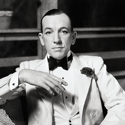
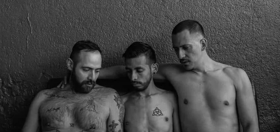

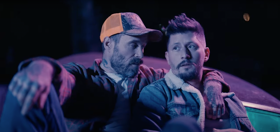
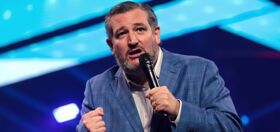
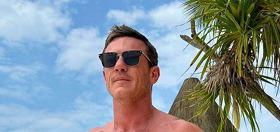



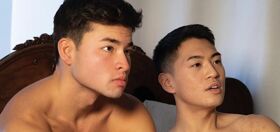




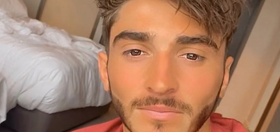
Brandon H
I swear to god if the term “boylesque” catches on i’m going to scratch your eyes out. Seriously, I will go all drunk Real Housewife on you.
Zora Phoenix
@Brandon H: Google it, kiddo. It ‘caught on’ years ago.
JayKay
I’m sure that flat-chested young lady is attractive and all, but When do the men show up?
Inspector X
Is it me, or is everyone listed in this series going for the “dark” look? I love glam and glitter but how many different incarnations of the same thing can you have?
EmpeROAR Fabulous
@JayKay: Believe it or not, JayKay, there are many kinds of bodies doing this artform. The (nearly) nude body is only one of many elements of this rich performance genre. There are many platforms to see stereotypically gay gym bunnies in their underwear, but this is about art and entertainment, not (always) a sex spectacle. I encourage you to go see a good established show and find out foryourself.
He looks pretty damn good to me. And if can’t say anything nice…